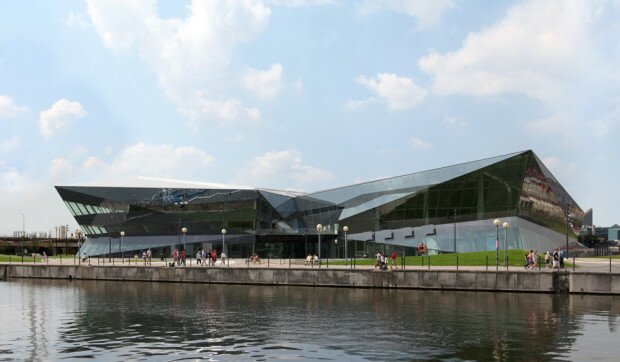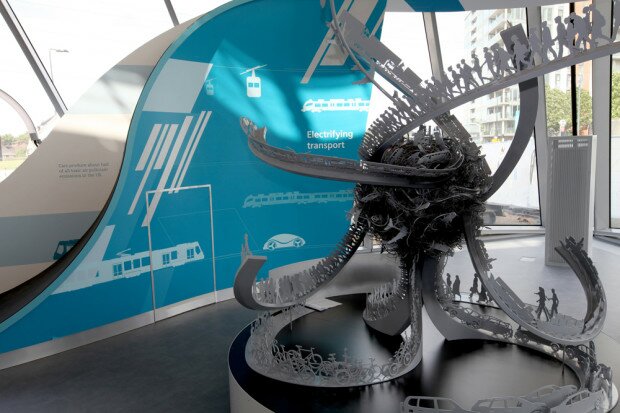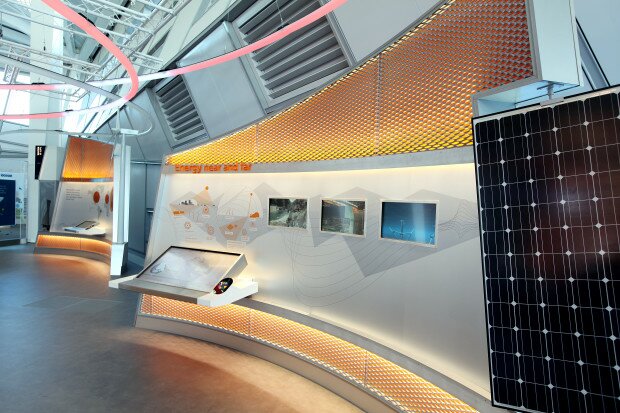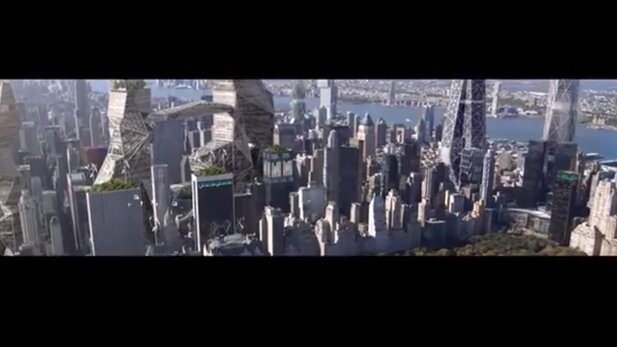The Crystal exhibition
Esther Robinson
August 1st 2013
During a weekend adventure with a friend on the DLR (as you do), I found myself in the deepest depths of east London, when a large glass building caught our attention. We had chanced upon what can only be described as a hidden gem – excuse the pun.
The Crystal is a building built by Siemens as part of their sustainable cities initiative and is dubbed one of the greenest buildings in the world; featuring technologies in rainwater harvesting, blackwater recycling, electricity generation and storage. Impressive, but the reason this building is a must-see is because it houses one of the most comprehensive educational resources of our time; in the form of a hi-tech, interactive exhibition. But what is it all about?
“For the first time in human history, more than half of humanity live in cities and the number is growing fast – 2 people per second; 200,000 people a day.”

The exhibition is about Urban Sustainability. The world’s cities are growing – every day more and more people move to urban areas in the search of opportunities for work, making them a force for economic growth. But growth in turn leads to an increase in consumption and not surprisingly, cities are accountable for 80% the world’s greenhouse gas emissions. Consideration for the way in which we design our cities is essential. They will have a great impact on the environment, climate change and the quality of life of future generations. It is highlighted that a balance between these key factors must be met in order to support a growing population. We are asked questions such as: how can cities evolve without damaging our climate? What is the role of business? And how can we contribute as individuals?

Guiding you through a series of interactive zones it is a university education crammed into one exhibition. You can experience planning and managing a city, build your own ‘smart’ building, generate your own energy and learn how to reduce your water and carbon footprint. Delivered through fun games and challenges (and who doesn’t love a challenge?), you get a valuable insight into the systems and complexities upon which our cities are built. Since being flagged as a ‘high water user’ during the water footprint game, I have been taking shorter showers and cooling drinking water in the fridge instead of running tap water to cool it off.
The fascinating visualisations in the ‘future cities’ zone show us how global challenges can be solved with ideas and technology. I was interested to find out that people use 40% of global energy in buildings. Changing our buildings to energy efficient ‘smart buildings’ could make our future cities a lot more economically competitive. Governments have a role to play with building standards, but it is also down to individuals to change our attitudes towards our own energy consumption: improving our buildings, reducing waste, energy and water consumption at home and at work

After taking a public fall from grace back in 2006 amidst corruption charges, Siemens has come back strong. Much like an individual, obstacles sometimes prove to be more beneficial in the long term; forcing us to question and re-evaluate our goals. With The Crystal, Siemens certainly seems to have redefined their business as one contributing towards society and good for them! But good for us too, as I think the Crystal will become a significant educational resource for sustainable development in cities for years to come. I’ve already been twice and will definitely be going again – it’s essential viewing in my book.
